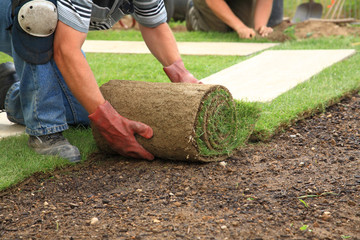Plumber Rosenberg TX plays a vital role in ensuring the smooth operation of water systems in residential and commercial spaces. Their work goes beyond fixing leaks and unclogging drains. Professional plumbers manage complex systems that provide clean water and proper waste disposal. Their expertise ensures that these systems function efficiently and safely.
Plumbing systems have become more advanced with modern technology. Plumbers are trained to handle a wide range of issues, from pipe installations to water pressure adjustments. They work with heating systems, sewage lines, and even gas pipelines. Proper training and experience are essential for handling these tasks.
Identifying leaks is one of the most common challenges plumbers face. Even small leaks can lead to water damage and increased utility costs. Plumbers use specialized tools to detect and repair hidden leaks. Early detection helps prevent structural damage and mold growth.
Blocked drains are another frequent issue that requires immediate attention. Grease, hair, and debris can accumulate and restrict water flow. Plumbers use high-pressure cleaning tools to clear obstructions. Proper maintenance reduces the risk of recurring blockages.
Plumbers also handle water heater problems. Issues with heating elements, pressure valves, or thermostats can disrupt hot water supply. Regular inspections help identify potential problems before they become serious. Prompt repairs ensure consistent hot water access.
Frozen pipes can cause significant damage during cold weather. Water expands when it freezes, which can cause pipes to burst. Plumbers insulate pipes and install heating elements to prevent freezing. Quick action minimizes repair costs and water damage.
Installing and maintaining toilets is another critical task. A malfunctioning toilet can waste water and increase bills. Plumbers repair leaks, adjust flushing mechanisms, and replace worn-out parts. Efficient toilets reduce water waste and improve overall system performance.
Gas line installation and maintenance require specialized skills. Gas leaks are dangerous and need immediate attention. Plumbers use advanced leak detection methods and follow strict safety protocols. Proper installation ensures a reliable and safe gas supply.
Plumbers are also involved in backflow prevention. Backflow occurs when contaminated water flows back into the clean water supply. Plumbers install check valves and test systems to prevent this issue. Proper backflow prevention protects public health and water quality.
Installing sump pumps is essential for preventing basement flooding. Plumbers install and maintain these systems to remove excess water. They test float switches and discharge lines for proper operation. A reliable sump pump system prevents costly water damage.
Low water pressure can affect daily activities like showering and dishwashing. Plumbers inspect pipes, pressure regulators, and valves to identify the cause. Adjustments or replacements restore consistent pressure. Proper water pressure improves comfort and appliance efficiency.
Routine plumbing inspections help prevent major repairs. Plumbers assess the condition of pipes, fixtures, and joints. Early detection of corrosion or leaks prevents system failures. Regular maintenance improves system longevity and performance.
Eco-friendly plumbing solutions are becoming more popular. Plumbers install water-saving fixtures and energy-efficient heaters. Leak detection and repair also reduce water waste. Sustainable plumbing solutions lower utility costs and environmental impact.
Water softeners protect plumbing systems from hard water damage. Hard water causes mineral buildup in pipes and appliances. Plumbers install and maintain softening systems to prevent this issue. Softened water improves appliance performance and reduces maintenance costs.
Outdoor plumbing systems require specialized care. Plumbers install and maintain sprinkler systems, hose bibs, and outdoor sinks. Proper installation prevents leaks and pressure issues. Well-maintained outdoor plumbing enhances convenience and functionality.
Plumbers play a key role in kitchen and bathroom renovations. Moving pipes and installing new fixtures require careful planning. Plumbers ensure proper alignment and secure connections. Professional installation prevents leaks and pressure problems.
Commercial plumbing systems are more complex than residential ones. High-capacity pipes, water heaters, and drainage systems require precise handling. Plumbers design and maintain these systems to handle heavy usage. Efficient commercial plumbing ensures uninterrupted operation.
Emergency plumbing services are crucial for sudden issues. Burst pipes, sewage backups, and water heater failures need immediate attention. Plumbers respond quickly to minimize damage and restore functionality. Fast repairs prevent costly structural damage.
Installing water filtration systems improves water quality. Plumbers assess the water source and install suitable filters. These systems remove contaminants, sediment, and chlorine. Clean water enhances health and extends the life of appliances.
Drain venting is essential for proper drainage. Plumbers install and maintain vent pipes to prevent airlocks and slow drainage. Proper venting reduces noise and prevents unpleasant odors. Well-vented drains improve overall system performance.
Plumbing codes and regulations are designed to protect public safety. Plumbers stay updated on these standards to ensure compliance. Proper installation and maintenance prevent safety hazards. Professional work meets legal and industry standards.
Water conservation strategies help reduce waste and lower costs. Plumbers install low-flow fixtures, dual-flush toilets, and pressure regulators. Fixing leaks and improving pressure also conserve water. Efficient plumbing systems support sustainable living.
Underground pipe repair requires specialized equipment and techniques. Plumbers use trenchless methods to minimize surface disruption. Pipe relining and directional drilling restore function with minimal excavation. Advanced techniques save time and reduce repair costs.
Plumbing maintenance agreements offer long-term protection. Plumbers provide regular inspections and priority service for contract holders. Early detection of issues prevents expensive repairs. Maintenance plans ensure reliable system performance.
Greywater systems help reduce water waste. Plumbers install systems that reuse water from sinks and showers for irrigation. Treated greywater reduces dependence on the main water supply. Efficient greywater systems lower utility costs and support sustainability.
Upgrading fixtures enhances both function and appearance. Plumbers install modern faucets, sinks, and showers. Water-saving and touchless models improve convenience and reduce water use. Stylish fixtures elevate the overall look of the space.
Septic systems require regular maintenance for optimal performance. Plumbers inspect tanks, drain fields, and inlet pipes for blockages and wear. Regular pumping and cleaning prevent backups and failures. Well-maintained septic systems ensure proper waste management.
Replacing old pipes improves water flow and quality. Corroded or damaged pipes restrict pressure and cause discoloration. Plumbers use durable materials for replacements. New piping systems increase efficiency and reliability.
Pressure regulators protect plumbing systems from damage. High water pressure can strain pipes and fixtures. Plumbers install and adjust regulators to maintain safe pressure levels. Proper regulation extends the life of the plumbing system.
Flood prevention systems add an extra layer of protection. Plumbers install check valves, sump pumps, and flood sensors. Early detection and automatic shutoff prevent extensive water damage. Flood prevention systems provide peace of mind.
Plumbing upgrades can increase property value. Modern fixtures, efficient systems, and proper drainage attract buyers. Professional installation ensures long-lasting reliability. Well-maintained plumbing systems improve the overall appeal of a property.
Hot water circulation systems provide immediate access to hot water. Plumbers install pumps that keep hot water moving through pipes. Faster access reduces water waste and improves comfort. Circulation systems increase energy efficiency.
Noise reduction in plumbing systems improves comfort. Plumbers install insulation and adjust pipe alignment to reduce noise. Water hammer arrestors prevent banging and vibration. Quieter plumbing systems enhance the home environment.
Smart plumbing systems integrate with modern technology. Plumbers install Wi-Fi-connected leak detectors, shutoff valves, and heaters. Remote monitoring and control improve convenience and safety. Smart plumbing increases efficiency and responsiveness.
Plumbers provide essential services that maintain health, comfort, and safety. Their expertise ensures reliable water access and waste disposal. Professional maintenance prevents costly damage and improves efficiency. Investing in quality plumbing supports long-term system performance.




